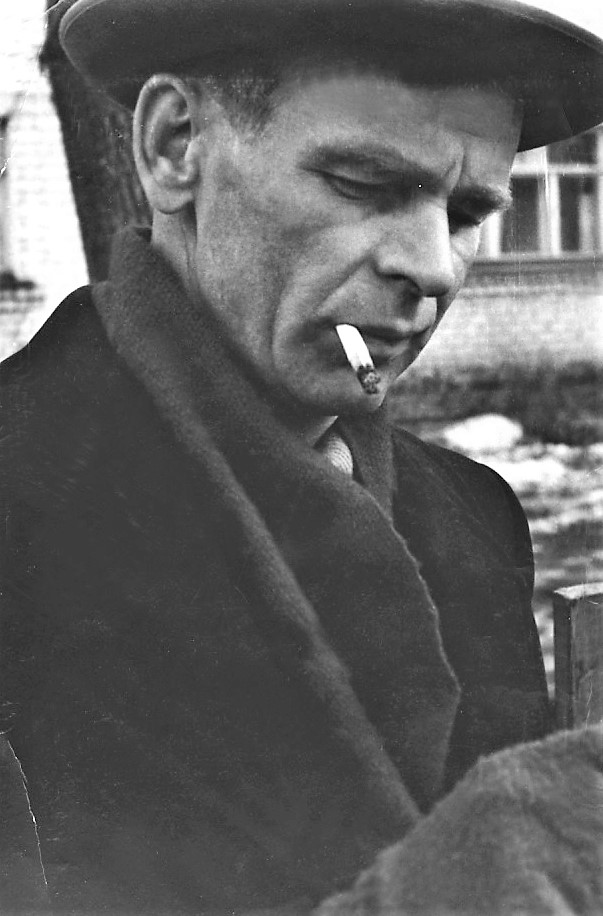
Vasily Golubev
“In the end, Golubev may be looked upon in the Russian tradition as not being of this world – a sort of Russian “Holy Man” with all of the implied qualifications and attributes – a “Holy Man” who gave his soul and his special gift to the world.” Albert Kostenevich, Keeper of Impressionist Paintings State Hermitage Museum St. Petersburg, Russia Born on June 15, 1925, in Medvezhe, a village in the Soligalich Area of the Kostroma Region... Show More
“In the end, Golubev may be looked upon in the Russian tradition as not being of this world – a sort of Russian “Holy Man” with all of the implied qualifications and attributes – a “Holy Man” who gave his soul and his special gift to the world.”
Albert Kostenevich, Keeper of Impressionist Paintings
State Hermitage Museum
St. Petersburg, Russia
Born on June 15, 1925, in Medvezhe, a village in the Soligalich Area of the Kostroma Region in the very heart of Northern Russia, Golubev was fired by a desire to study and learn. That desire brought the village boy of Russian peasant roots to study at Leningrad Art School. But his studies were broken off by World War II and it wasn’t until 1951 that he finally graduated.
The 1950’s and 1960’s followed. His art developed along the lines of classical Russian Realism, as he gradually mastered the emotional potential of plein air painting of the kind so powerfully manifested in Russian painting from the end of the 19th Century. His landscapes from this period are melancholy, contemplative images of rural Russia, echoing the paintings of Isaak Levitan.
Ultimately Golubev found his way towards an impressionist understanding of color. His landscapes became more painterly, and his lyrical descriptive mood was replaced by a manner in which color came to play an active, central role, and eventually became symbolic. From the early 1970’s, Golubev was entirely dedicated to the principles of post-impressionism, of which he had created his own original Russian version. His energetic impasto, the free and open brushstrokes, the disturbing color harmonies gave the traditionally intimate central Russian landscape drama and a new penetrating content.
Modest, focused within himself, introverted, preferring to spend all his time out in the open air, he had no interest in self-representation or in any of the social and political manifestations which were obligatory in official art. Official art saw him as an outsider, as something alien.
Golubev never produced a single commissioned portrait. This brilliant exponent of post-impressionism was never part of the cultural elite. If he had been, he would have been seen as western-oriented, a cosmopolitan, a dangerous category for an artist of his day. Instead he was a humble man, a “man of the earth”, and could hardly be suspected of such western leanings. He learned the lessons of impressionism and then post-impressionism independently until they combined, intertwined and became the fruit of his own development. In the face of his incontrovertible fact, the powers-that-be preferred simply to ignore his work.
Golubev’s time was one of isolation in terms of the information available. It was impossible to gain normal objective information about all of the latest trends in art while he was a student. But thanks to Golubev’s independence he emerged through the most turbulent times to create highly cultured and refined paintings. Even in the face of totalitarian oppression he found optimism and the courage to express what was in his heart, engaging in the forbidden art form of expressionism: his own personal version of expressionism, absolutely independent of any connection or knowledge of artistic trends of the west. Yet, curiously, he reached many of the same conclusions as such major expressionists as Munch and Dufy. Golubev combined his naïve folksy view of the world with his personal suffering delivering an intense contemporary statement with an unassuming approach.
Vasily Golubev, arguably one of the most important Russian expressionists of the 20th Century, like other Russian 20th Century painters: Kandinsky, Chagall, Malevich, and more was practically unknown in his homeland. If not for the work of the Pushkin Group, this name might have been forgotten.
Public Collections and Principle Exhibitions
PUBLIC COLLECTIONS
Abramtsevo: State Museum of History, Arts, and Literature.
Beloretsk: Beloretsk Picture Gallery.
Briansk: Art Museum of the Briansk Region.
Vladimir: Vladimir-Suzdal State Museum of History and Architecture.
Vyshnyl Volochok: Local branch of the Kalinin State Museum of History and Architecture.
Gorlovka (Donetsk region): Gorlovka State Museum.
Izhevsk: Udmurtia Art Museum.
Ioshkor-Ola: Mari Exhibition Hall.
Tver: Tver Art Museum at Catherine’s Palace.
Kurgan: Kurgan Art Museum.
Konstantinnivsk (Rostov region): City Art Museum.
Novgorod: Novgorod State Museum of History, Architecture and Art.
Novokuznetsk (Kemerovo region): Novokuznetsk Museum of Soviet Art.
Omsk: Museum of Arts.
Oryol: State Picture Gallery.
Orenburg: Museum of Arts.
Ekaterinburg (Sverdlovsk): Museum of Arts.
Cheboksary: Chuvashi State Art Gallery.
Shadrinsk (Kurgan region): Museum of Local Lore, History and Economy and various picture galleries and other institutions.
Altai region: Pavlovsk Picture Gallery.
Moscow: Republic Center for Art Exhibitions.
Moscow region: Sovkhoz Voronovo Art Gallery.
Pskov region: (Novorzhev area): Vekhnyanskaya Art Gallery.
PARTIAL LIST OF PRINCIPAL EXHIBITIONS
Exhibition of works by Leningrad Artists, State Russian Museum, Leningrad, 1951.
All-Union Exhibition of Arts, State Tretiakov Gallery, Moscow, 1952.
First One-Man Exhibition of Golubev’s works, Russian Federation of Artists, Leningrad, 1957.
Exhibition of paintings, sculpture, and graphics dedicated to First All-Union Congress of Soviet Artists, USSR Union of Artists, Moscow.
Exhibition of Leningrad artists dedicated to 40th anniversary of the Great October Revolution, State Russian Museum, Leningrad.
All-Union Exhibition dedicated to the same anniversary, Central Exposition Hall, Moscow.
Traveling Exhibition Petersburg-Leningrad in Prints and Lithographs by Russian and Soviet Artists from the Hermitage Collections, Novgorod, Riga and Tallinn.
Exhibition of Leningrad Artists, Research Museum of the USSR Academy of Arts, Leningrad, 1960.
Republic Exhibition of Arts Soviet Russia, Central Exposition Hall, Moscow.
All-Union Exhibition of Arts dedicated to the 22nd Congress of the CPSU, Central Exposition Hall, Moscow, 1961.
Exhibition of Leningrad Artists, State Russian Museum, Leningrad.
Regional Exhibition, State Russian Museum, Leningrad.
Exhibition of Works by V. Golubev and N. Timkov, Leningrad.
Second One-Man Show, 1964. Traveling Exhibition to Moscow, Yaroslav, Krasnodor, Stravropol, and Kislovodsk.
Second Republic exhibition of arts Soviet Russia, Central Exposition Hall, Moscow.
Third Republic exhibition of arts Soviet Russia, dedicated to the 50th Anniversary of the October Revolution, Central Exposition Hall, Moscow.
All-Union exhibition dedicated to above anniversary, Central Exposition Hall, Moscow.
Fourth Republic exhibition of arts Soviet Russia, Central Exposition Hall, Moscow, 1970.
Exhibition of Leningrad artists dedicated to Vladimir I. Lenin, State Russian Museum, Leningrad.
Exhibition of Leningrad artists Our Contemporaries, State Russian Museum, Leningrad.
Exhibition of the Russian Federation of artists Around the Native Land, Central Exposition Hall, Moscow, 1974.
Exhibition of the Leningrad artists Around the Native Country, State Russian Museum, Leningrad.
Fifth Republic-wide exhibition Soviet Russia, Central Exposition Hall, Moscow, 1975.
Regional Exhibition of Leningrad artists Our Contemporaries, State Russian Museum, Leningrad.
All-Union Exhibition of Arts Glory to Labor, One-Man Exhibition of Golubev’s works, Leningrad Branch of the Russian Federation of Artists, Leningrad.
Exhibition The Arts of Leningrad, Central Exposition Hall, Moscow.
Republic-wide exhibition of Russian Federation artists dedicated to the 60th Anniversary of the October Revolution, Central Exposition Hall, Moscow.
All-Union art exhibition The Blue Roads of Russia, Central Exposition Hall, Moscow, 1979.
All-Union art exhibition of Leningrad artists dedicated to the 110th anniversary of V.I. Lenin, Central Exposition Hall, Moscow, 1980.
Sixth Republic-wide exhibition Soviet Russia, Central Exposition Hall, Moscow.
Petersburg-Petrograd-Leningrad in the Works of Soviet and Russian Artists, Central Exposition Hall, Leningrad.
All-Russian art exhibition Around the Native Country, Central Exposition Hall, Moscow, 1981.
Exhibition of Leningrad artists Our Contemporaries, Central Exposition Hall, Leningrad.
One-Man Exhibition of Golubev’s works, USSR Union of Artists, Yuri A. Gagarin Air Force Academy, Star City, Moscow, 1982.
Exhibition dedicated to 50th anniversary of the Leningrad branch of the Russian Federation Union of Artists, Central Exposition Hall, Leningrad.
Exhibition The Blue Roads of Russia, Central Exposition Hall, Moscow, 1983.
Exhibition A Land of Inspirations, Kalinin, 1984.
Exhibition of Leningrad artists, Central Exposition Hall, Leningrad, 1984.
Exhibition 60 Years with Lenin’s Name, Museum of Leningrad History, Leningrad.
Exhibition Our Leningrad, Central Exposition Hall, Leningrad, 1985.
Exhibition dedicated to the 100th anniversary of the Academy Dacha, Kalinin, 1986.
Posthumous Tribute exhibition, Central Exposition Hall, Leningrad, 1987.
One-man Exhibition, Pushkin Gallery, Santa Fe, New Mexico, 2003.
BIBLIOGRAPHY
Artists of Leningrad : A collection of articles/Compiled by I.N. Viunova. Leningrad, 1977.
Shekhter, T.Ye. Unofficial Art of St. Petersburg (Leningrad) as a Phenomenon of Culture of the Second Half of the 20th Century. St. Petersburg, 1995.
Roitenburg, Olga. Has Anyone Really Remembered that We Had Been… Moscow. Galart, 2004.
V. Kruglova and V. Leniashina, Russian Impressionism, State Russian Museum, Palace Editions,2000.
Sarabianov, D.V. Russian Painting of the 20th Century among European Schools. Moscow,1980.
World impressionism. The International Movement. 1860-1920 / Edited by N. Broud. New York: H.N Abrams, 1990.
Pospelov, G. Russian Cézannism of the Early ?? Century // Paul Cezanne and Russian Avant-garde of the Beginning of the 20th Century. St. Petersburg,1998.
Punin. Russian and Soviet Art. Moscow, 1976.
Soviet Art of 1920-1930-ies. State Russian Museum. Leningrad. Art, 1988.
Diogot, Ekaterina. Russian Art of the 20th Century. Moscow. Trefoil, 2000.
Elliot, David. New Worlds. Russian Art and Society 1900-37. London, 1986.
Cullern Bown, Matthew. Socialist Realist Painting. New Haven and London, 1998.
Art of the Soviets. Painting, sculpture and architecture in one-party state / Edited by Mathew Cullern Bown and Brandon Taylor. Manchester and New York: Manchester University Press, 1993.
Borovsky, A. Artists of Leningrad (joint authors). Kiev. Mistetstvo, 1986.
Borovsky, A. The Academic Dacha through the Eyes of Nikolai Timkov.
The Pushkin Group, Albuquerque, New Mexico, 1999.
Borovsky, A. The Role of the Collector in Contemporary Russian Culture and Russian Art Collections in the West. In : Forbidden Art. The Postwar Russian Avant-garde. D.A.P., N-Y, 1998.
Borovsky, A. "Fade, Fall Asleep, Revive". Abstract Art in Russia. In: Abstraction in Russia. Palace Editions. Vol. 2. 2001 (in Rusian and English).
Borovsky A. Silhouettes of Modern Artists. Ivan Limbach’s Publishing-house. St. Petersburg, 2003.
Show LessArtworks in Our Collection
-
Shrovetide *
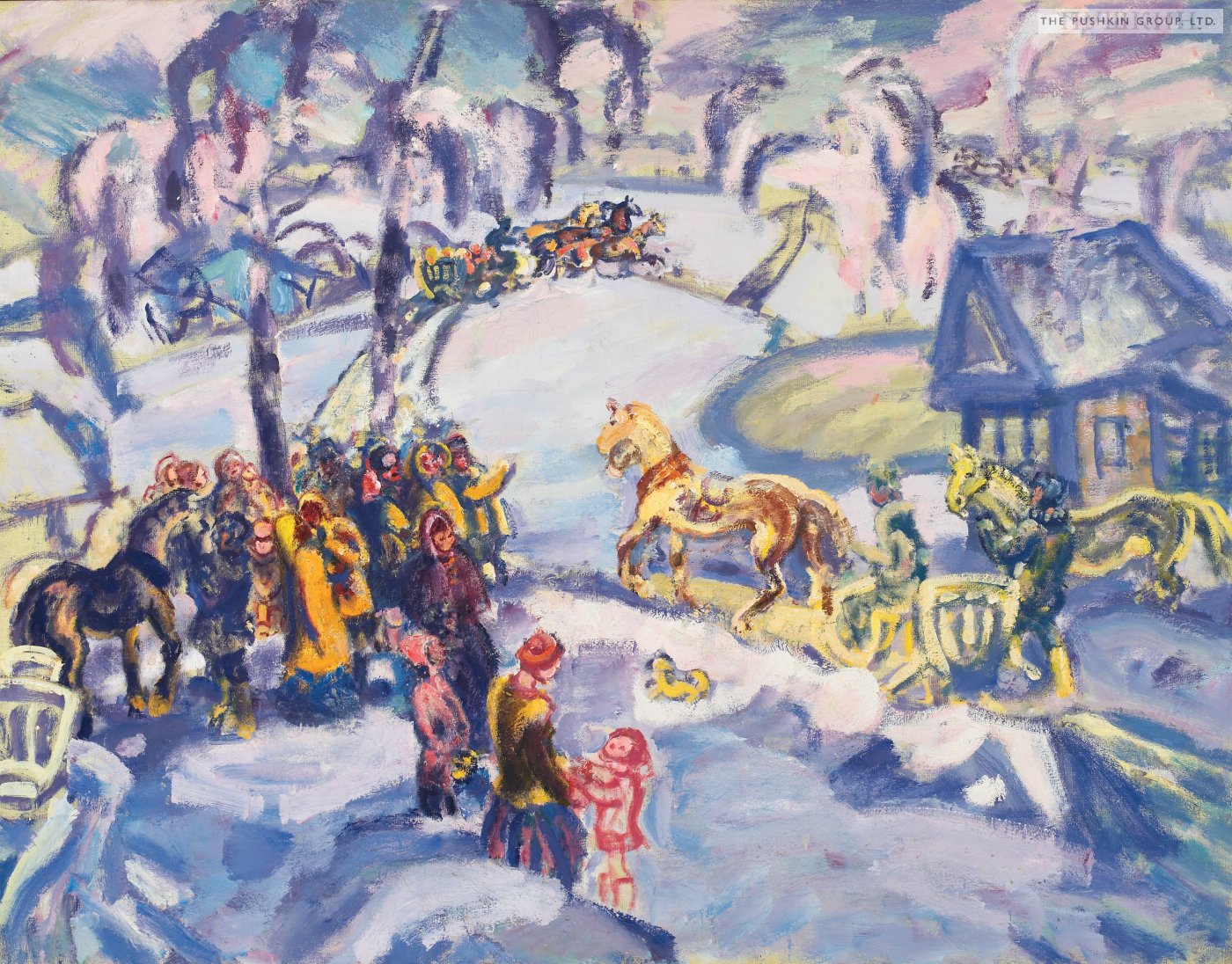
1981 / Oil on Canvas / 55.00" x 70.00" (138cm x 175cm) -
Summer
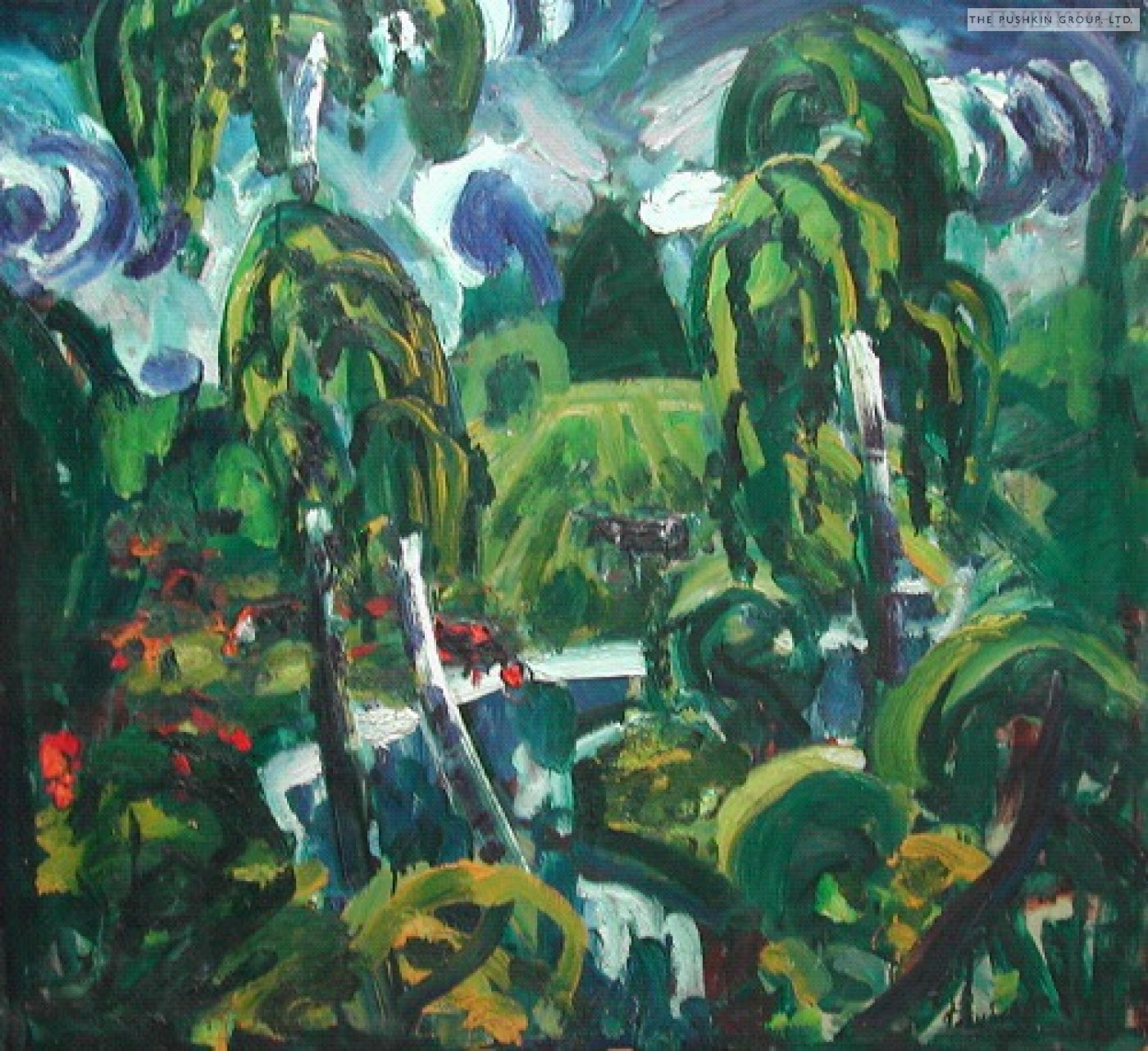
1982 / Oil on Panel / 41.00" x 43.00" (103cm x 108cm) -
Late Summer Storm *
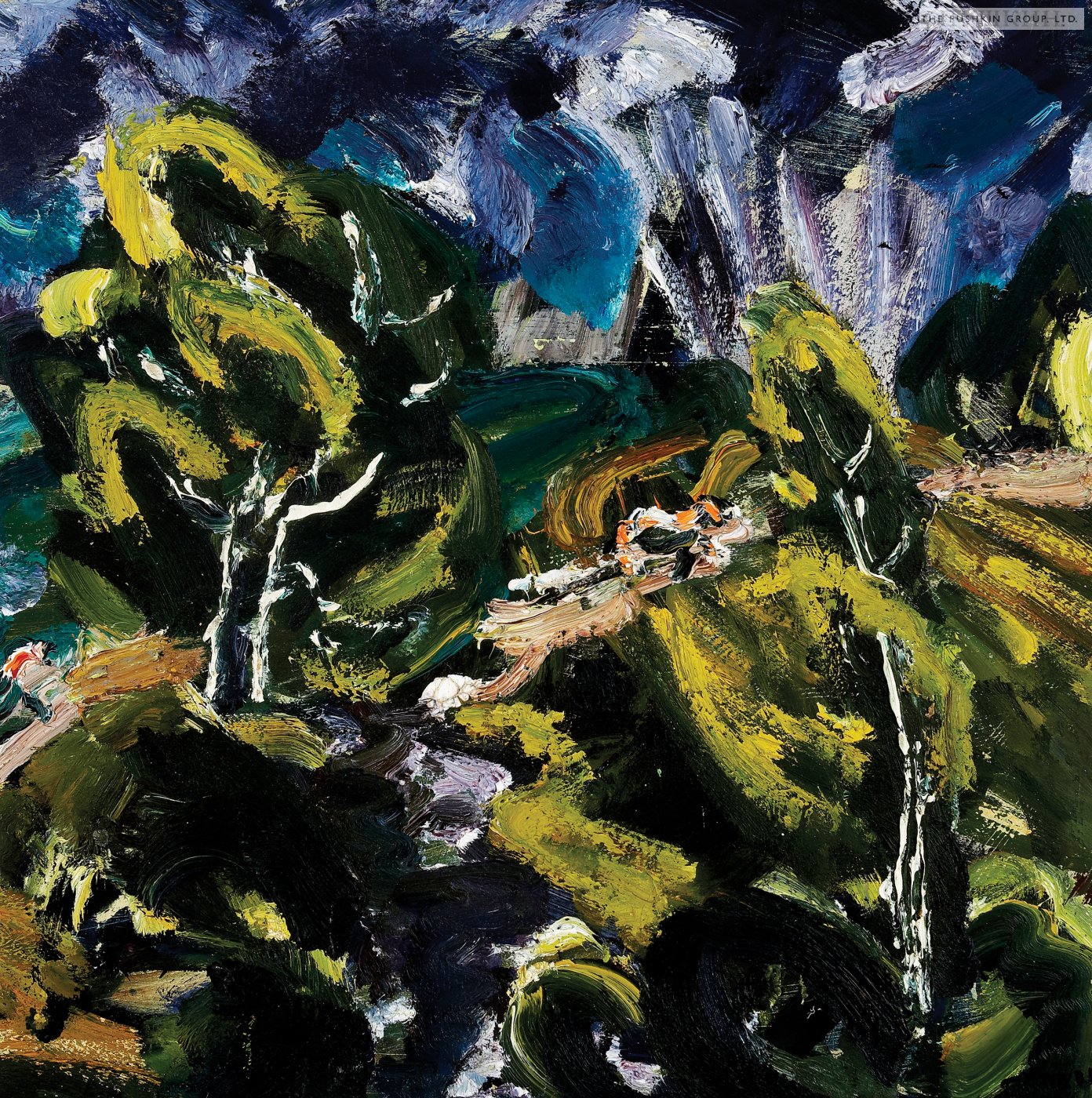
1978 / Oil on Panel / 22 x 22" (55cm x 55cm) -
Quick River *
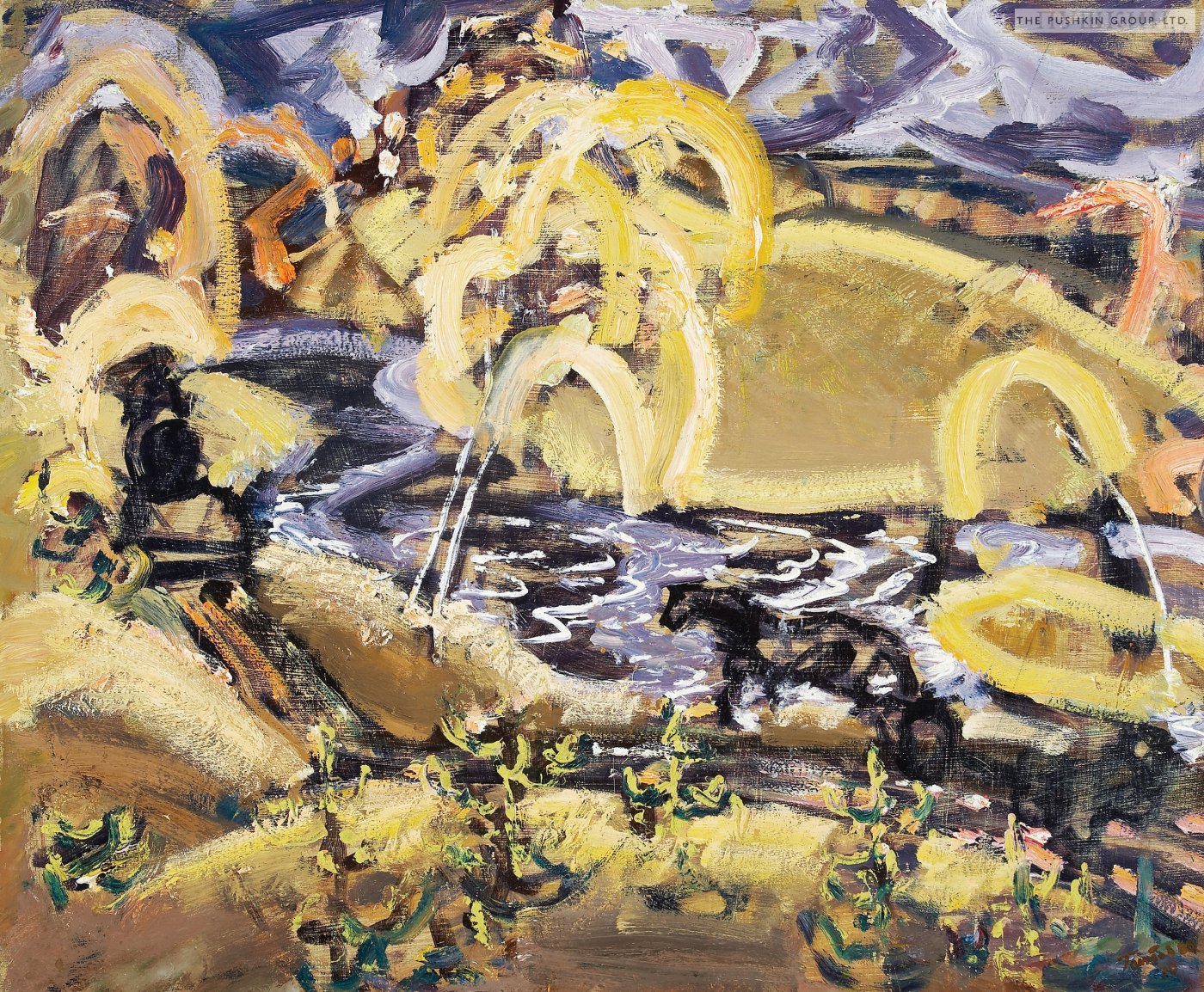
1970 / Oil on Panel / 23.00" x 28.00" (58cm x 70cm) -
Golden Forest
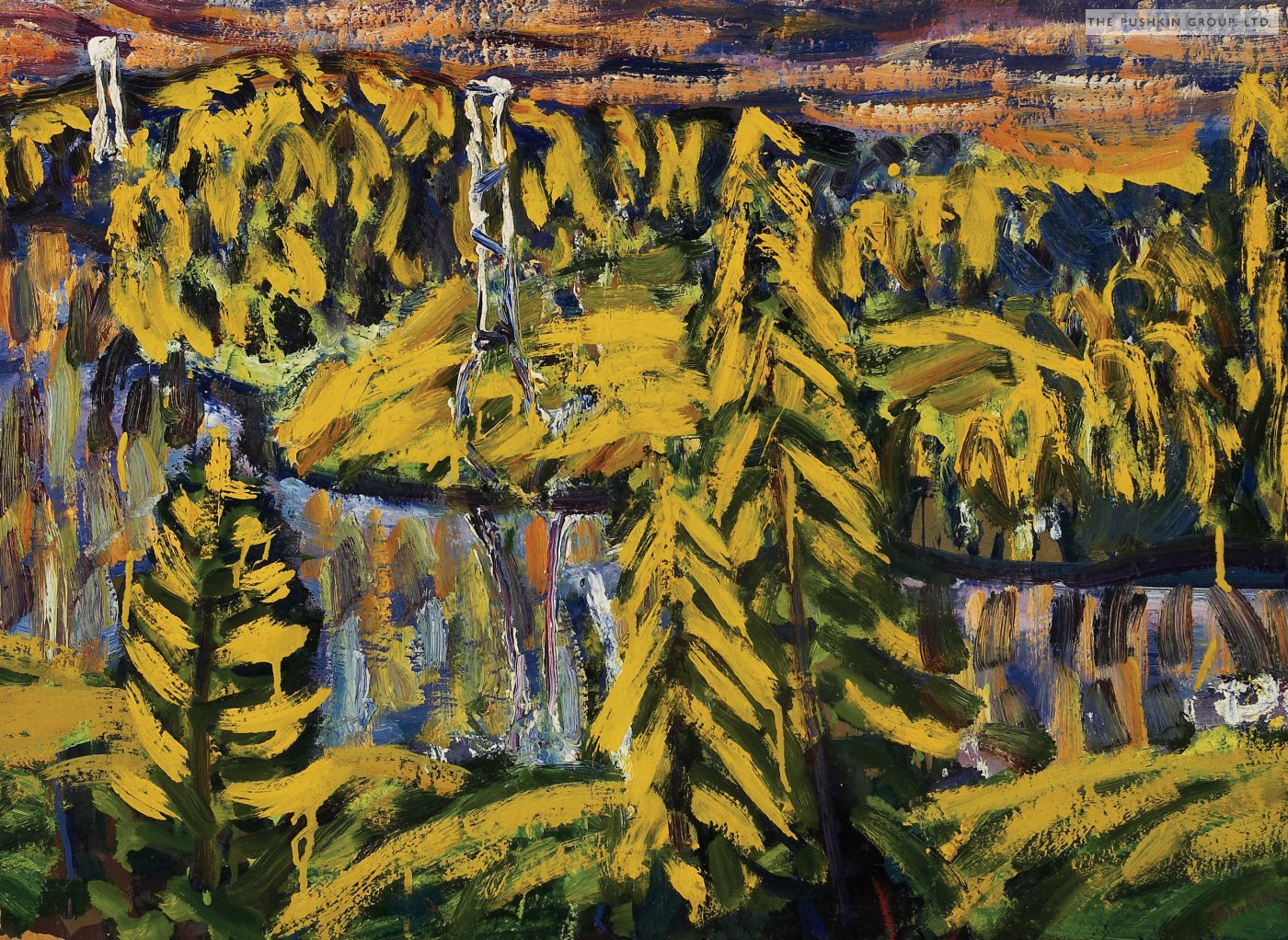
1979 / Oil on Panel / 18.00" x 25.00" (45cm x 63cm) -
Blue April *

1961 / Oil on Panel / 23 x 23" -
Whitewater
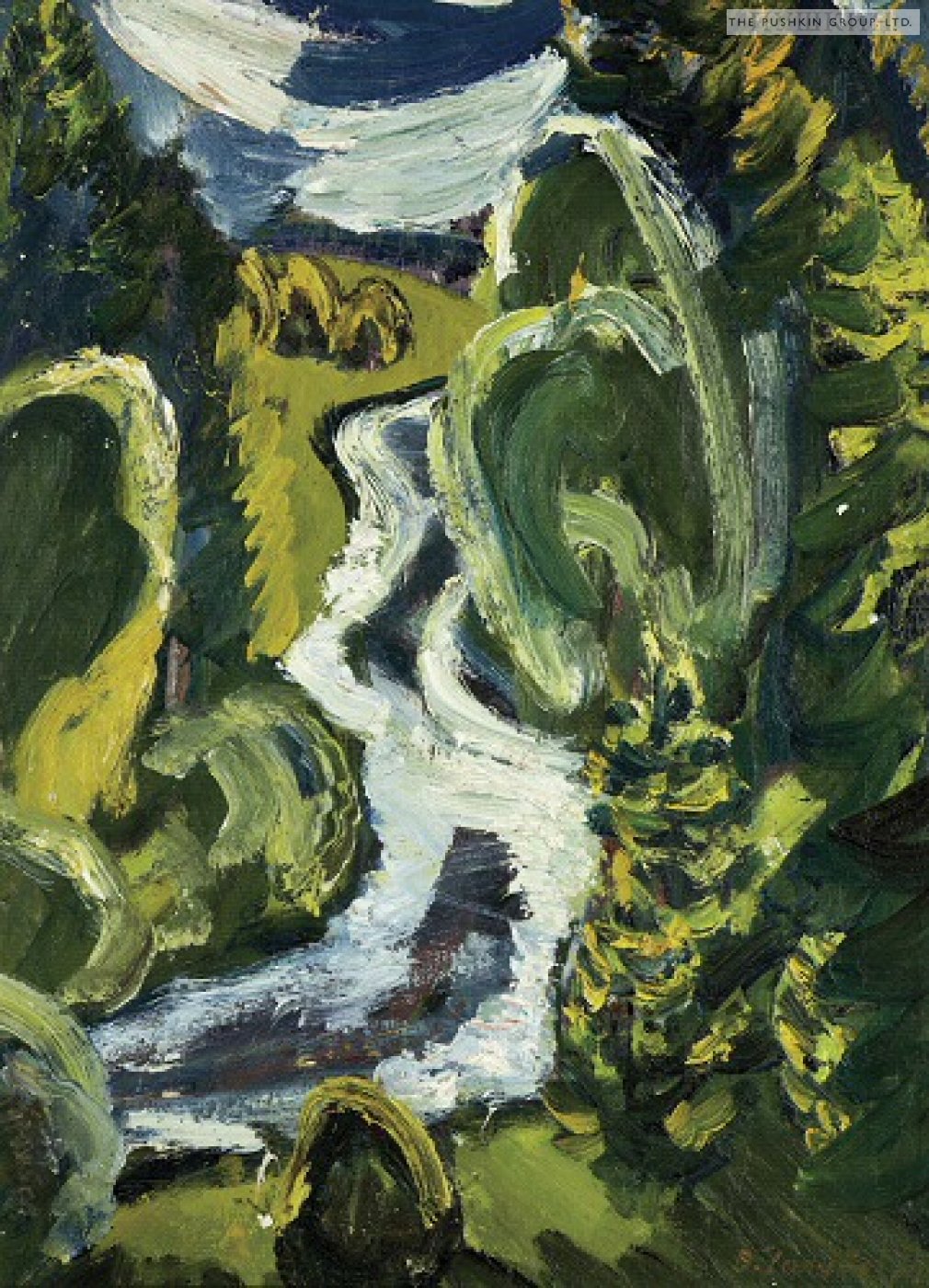
1970 / Oil on Panel / 24.00" x 18.00" (60cm x 45cm) -
Rays of Light *

1969 / Oil on Panel / 20.00" x 21.00" -
Spring Breezes *

1969 / Oil on Panel / 28 x 31" (70cm x 78cm) -
Tanya *
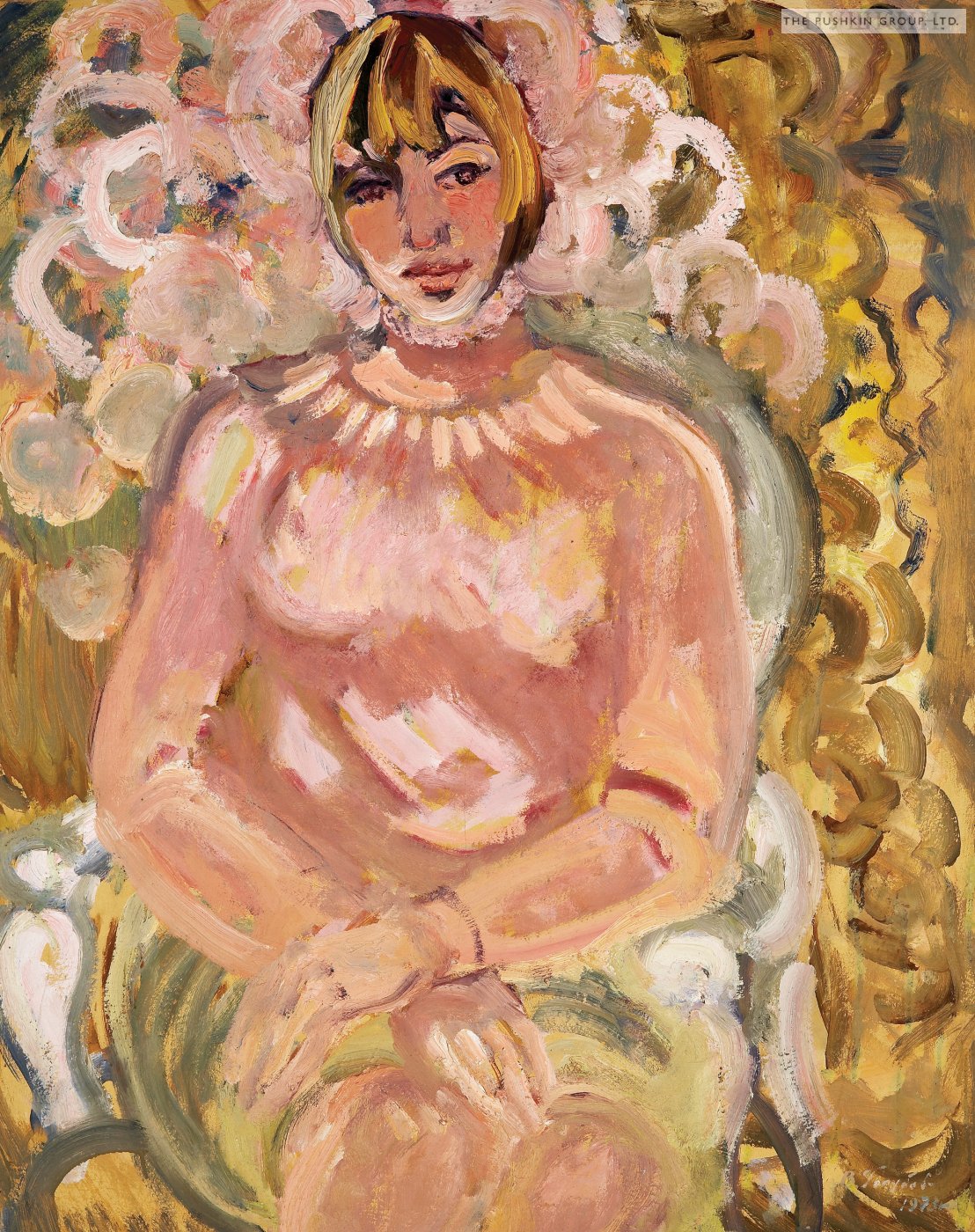
1973 / Oil on Panel / 38 x 30" (95cm x 75cm) -
September *
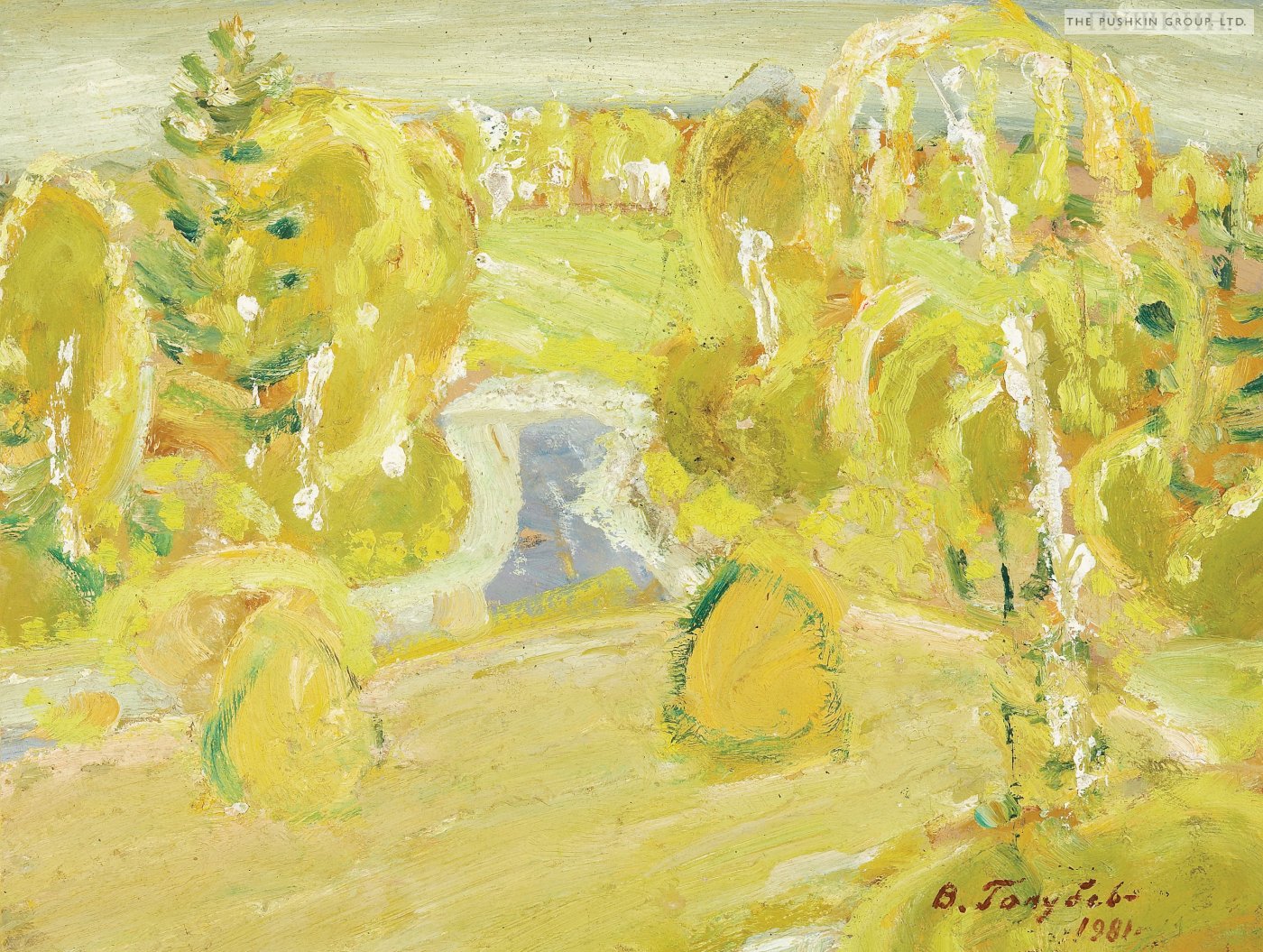
1981 / Oil on Panel / 15 x 20" (38cm x 50cm) -
Winter Cityscape *
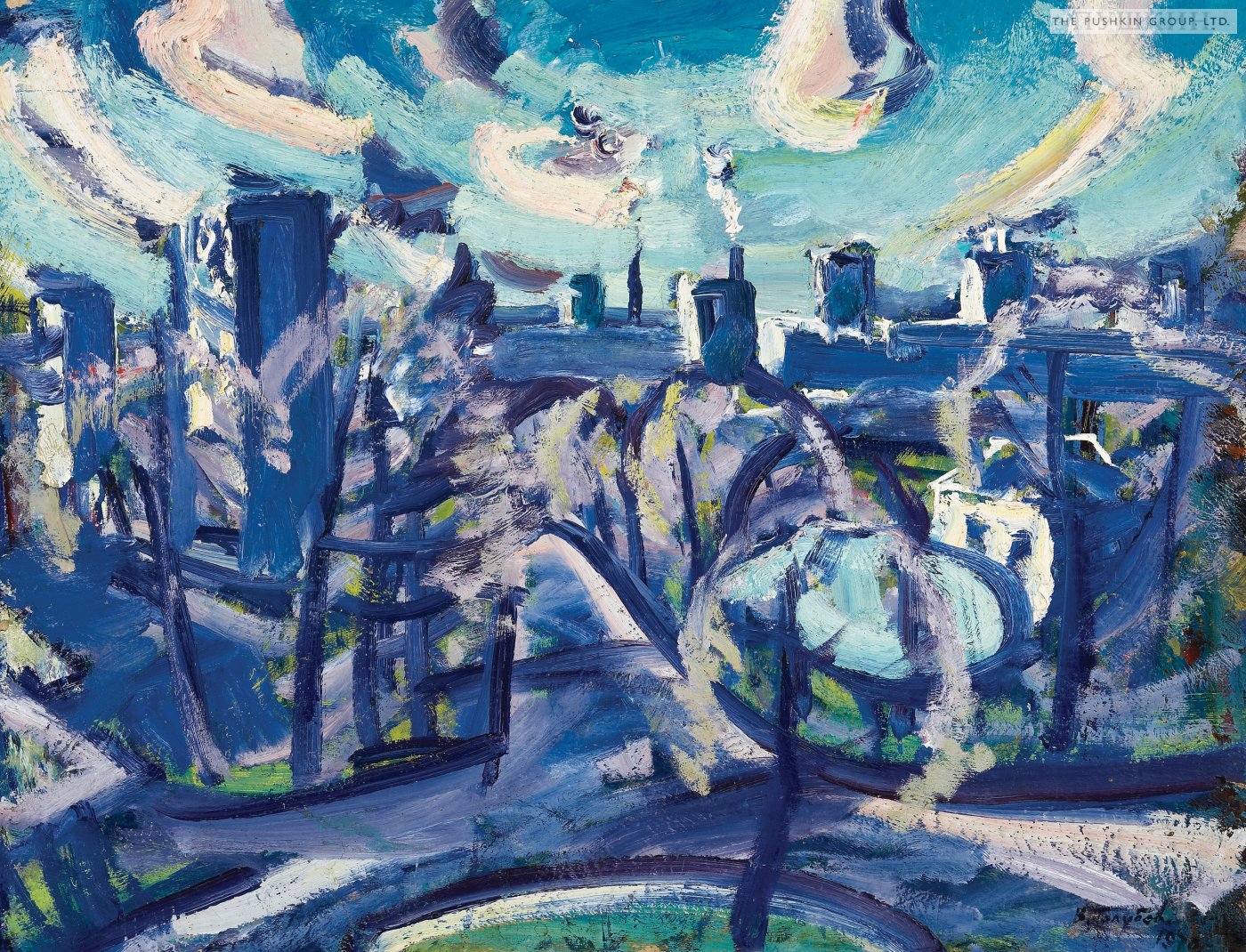
1970 / Oil on Masonite / 27" x 36" (68cm x 90cm) -
Kitchen Bench *
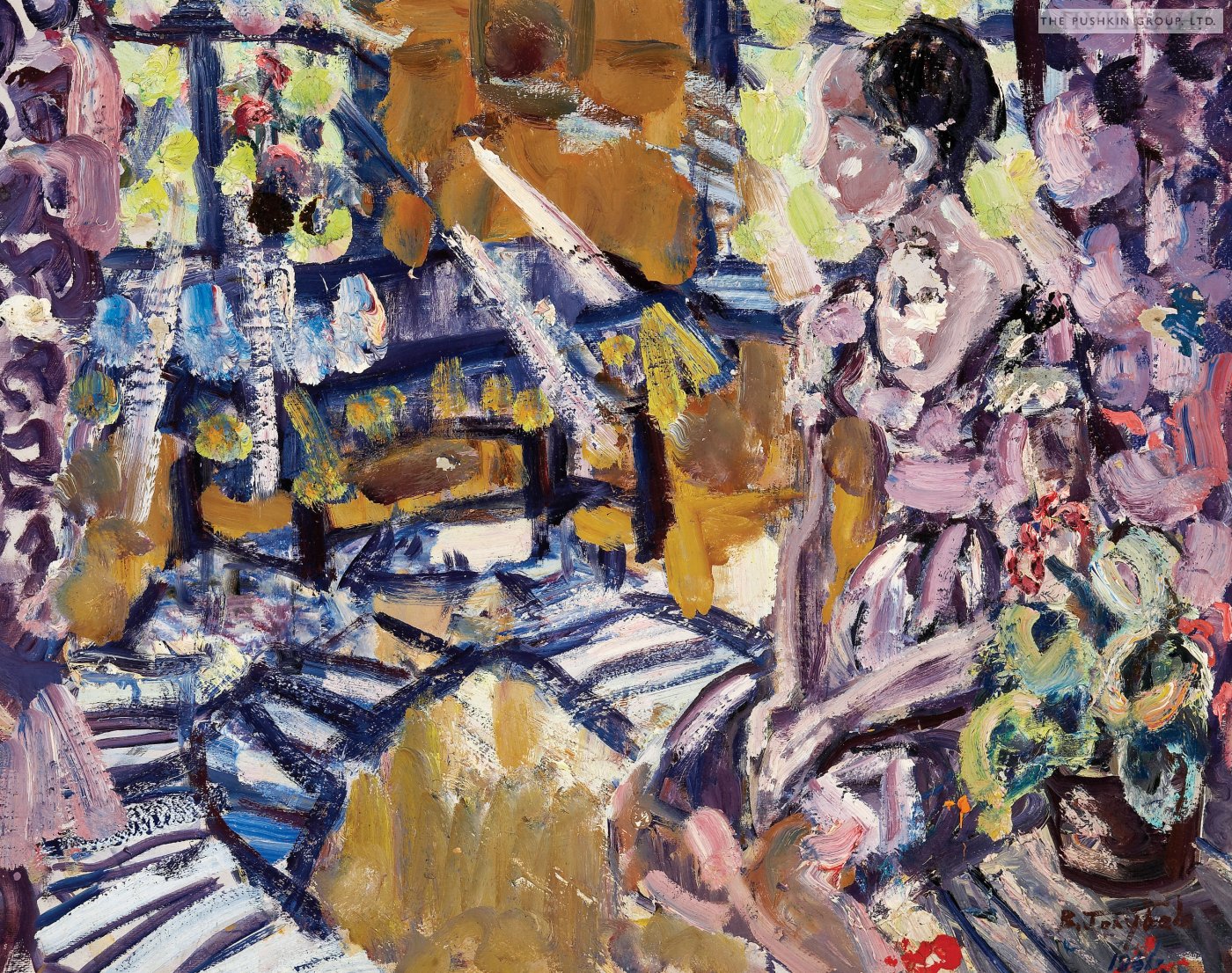
1961 / Oil on Panel / 26.00" x 34.00" (65cm x 85cm) -
Golden Evening *
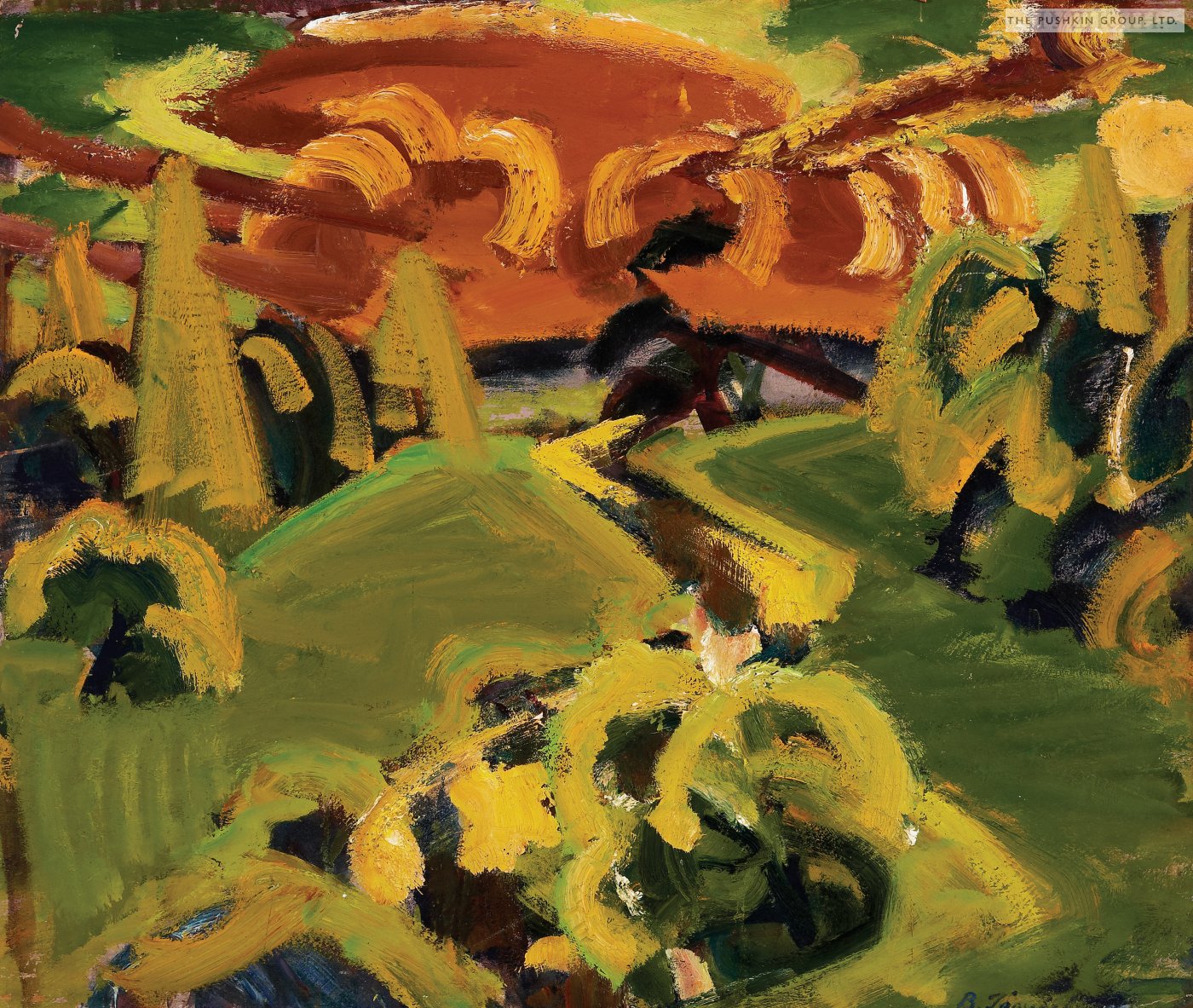
1973 / Oil on Panel / 28 x 32" (70cm x 80cm) -
Into the Hills
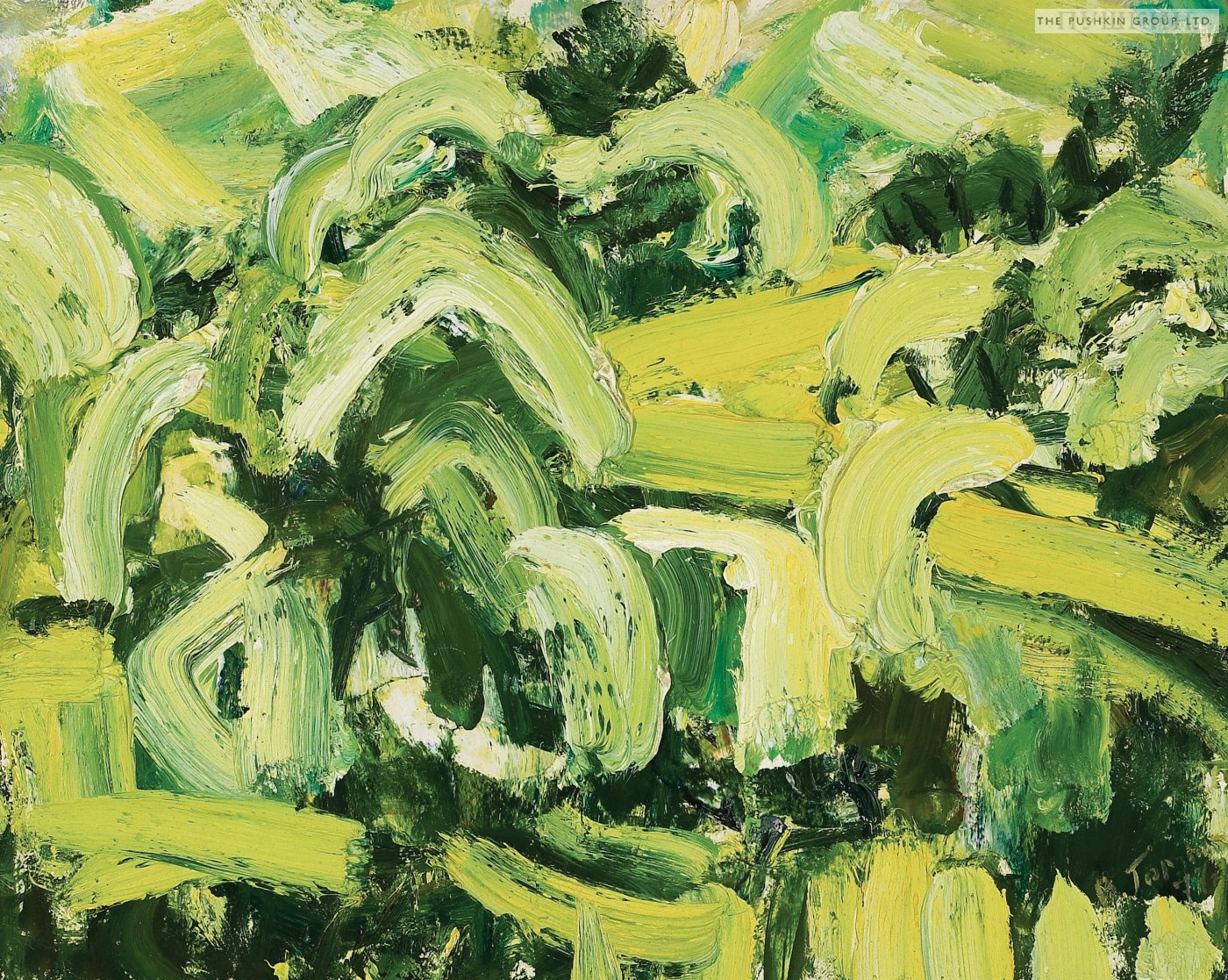
1977 / Oil on Panel / 19 x 24" (48cm x 60cm) -
Harvesting Grapes *
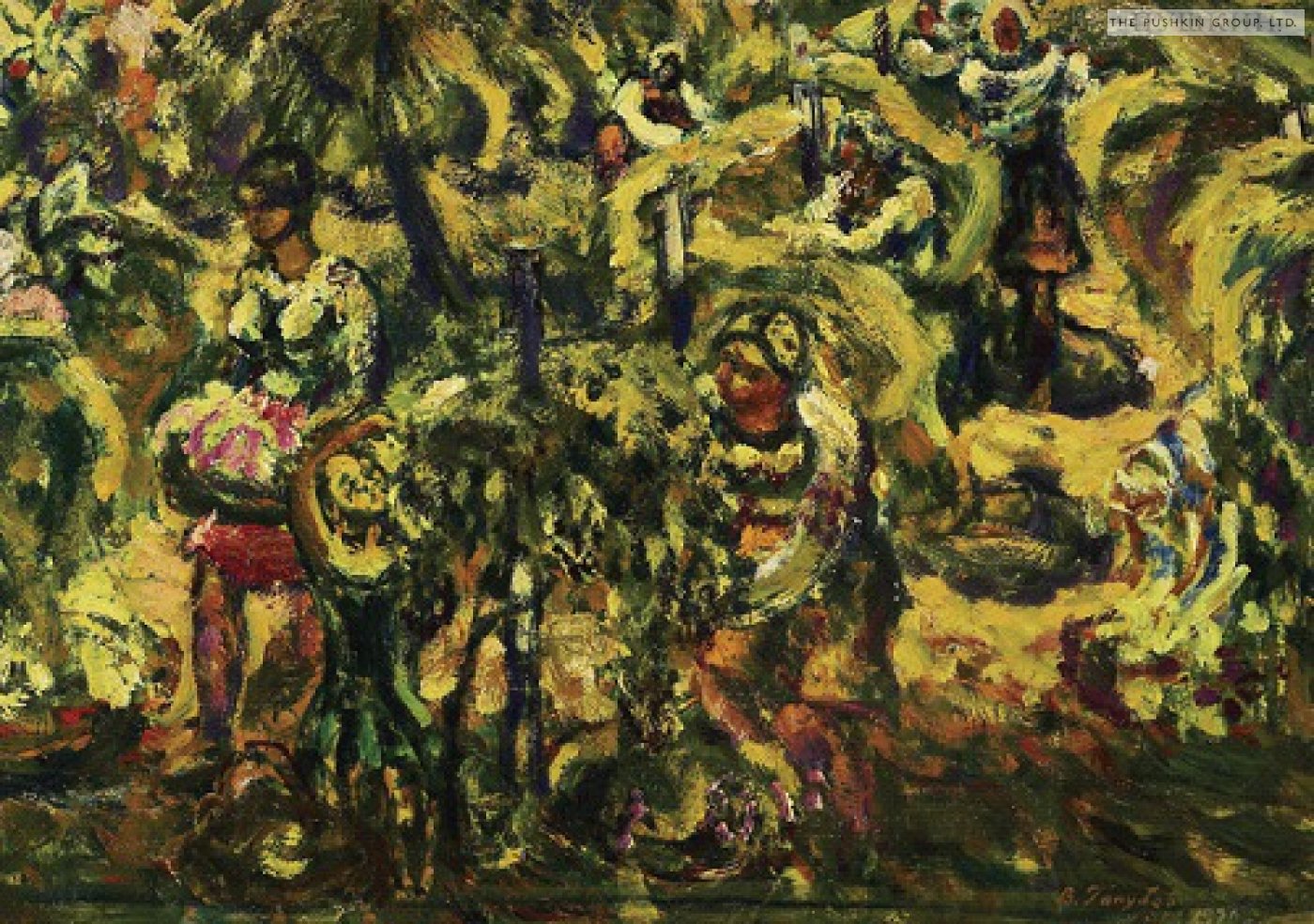
1972 / Oil on Masonite / 21 x 29" -
Winter in the City *
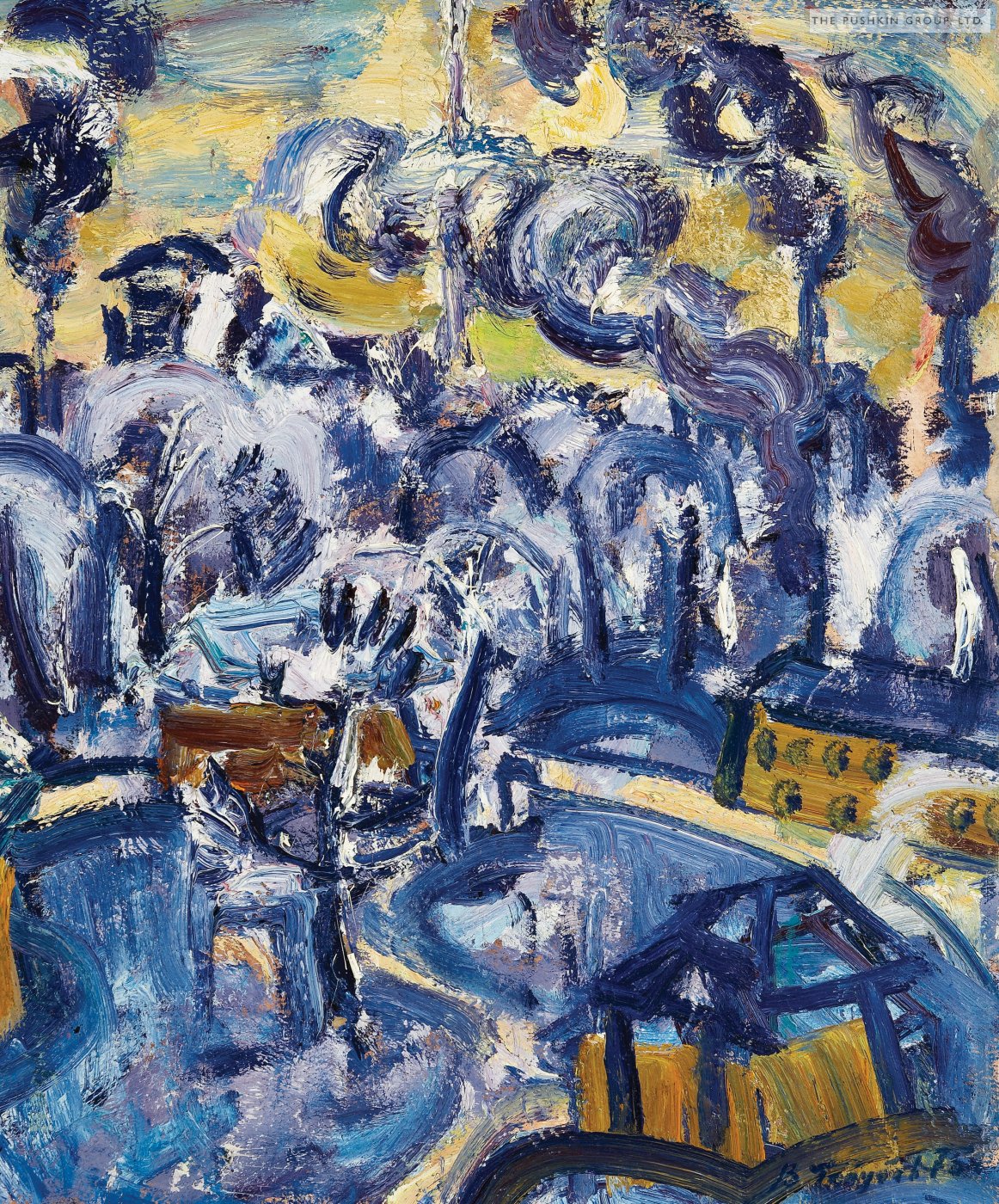
1975 / Oil on Panel / 22 x 18" (55cm x 45cm) -
Artists at the Dam *
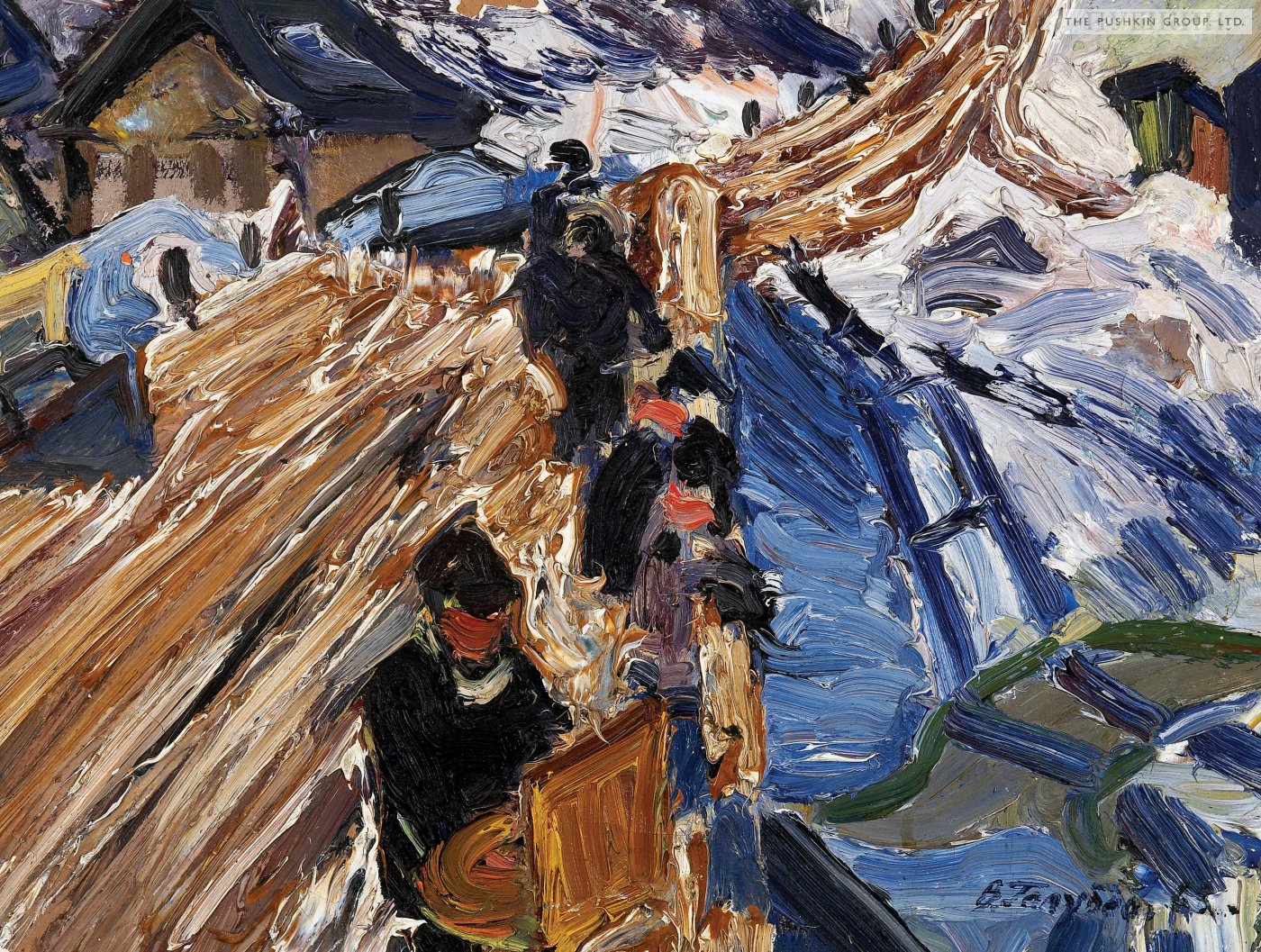
1962 / Oil on Panel / 13 x 18" (33cm x 45cm) -
Village Banquet *
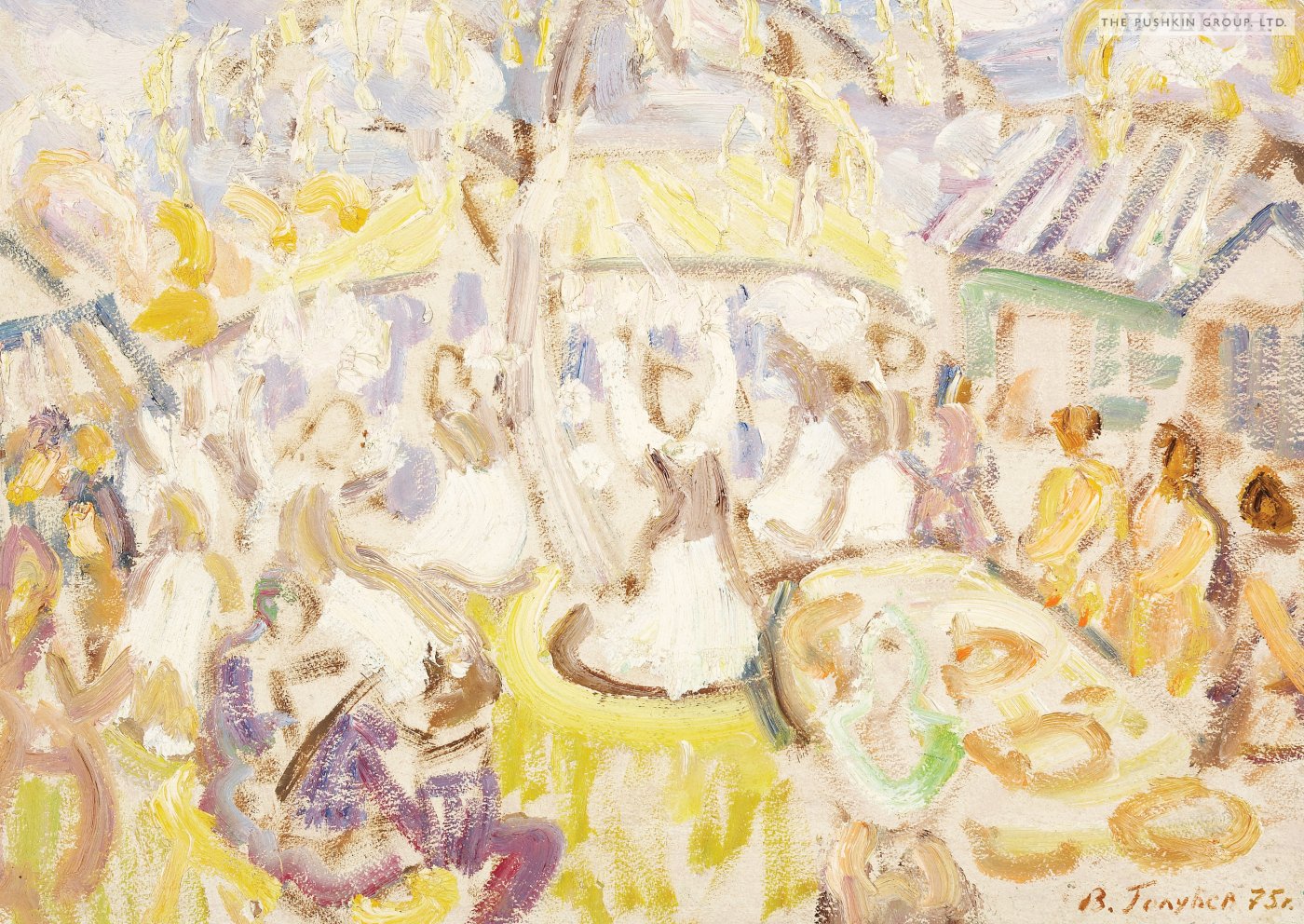
1975 / Oil on Panel / 20 x 28" (50cm x 70cm) -
Celebration in the Sky *
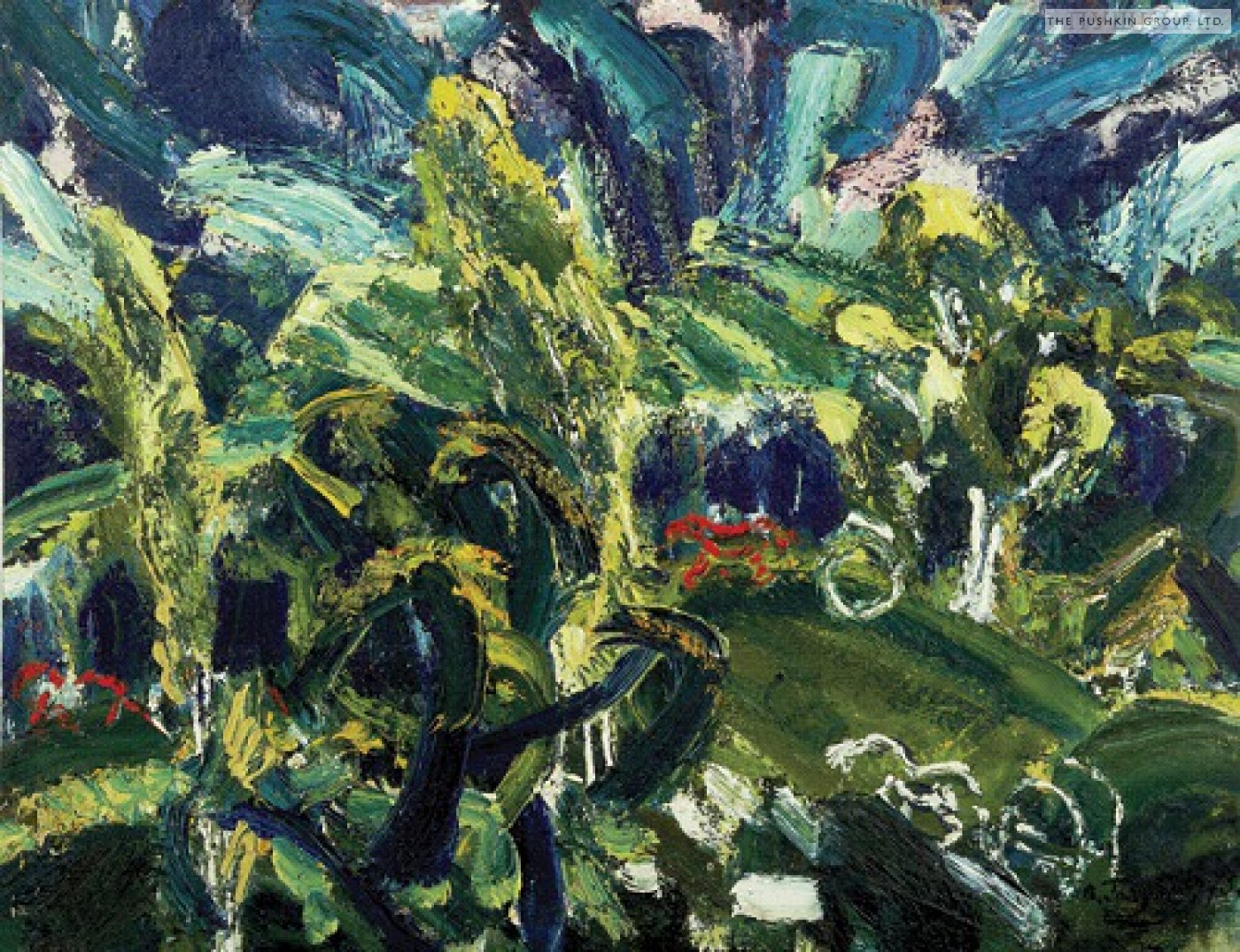
1973 / Oil on Panel / 23 x 29" -
August Sunset *
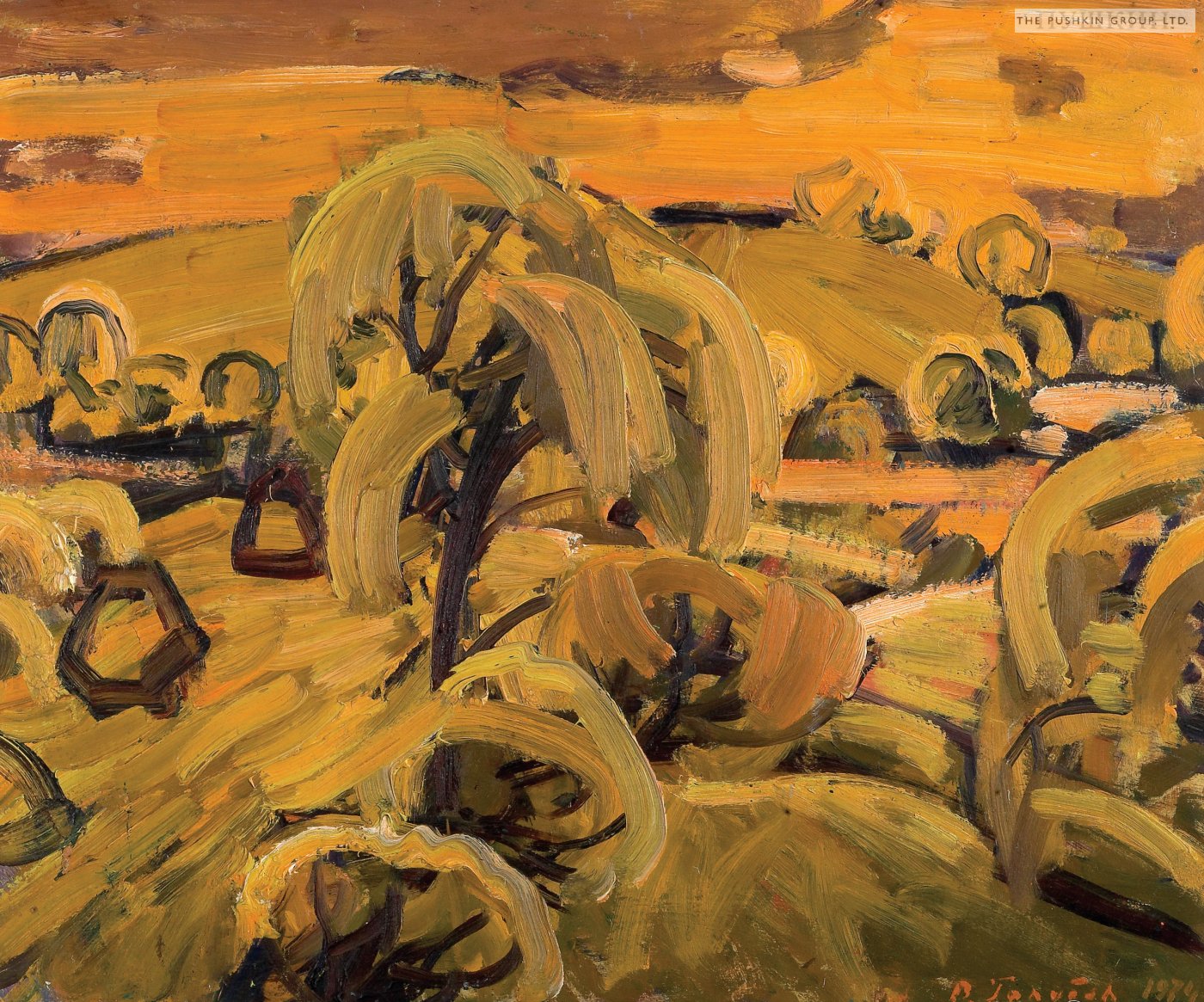
1974 / Oil on Panel / 22.00" x 27.00" (55cm x 68cm) -
The Lake Beyond *
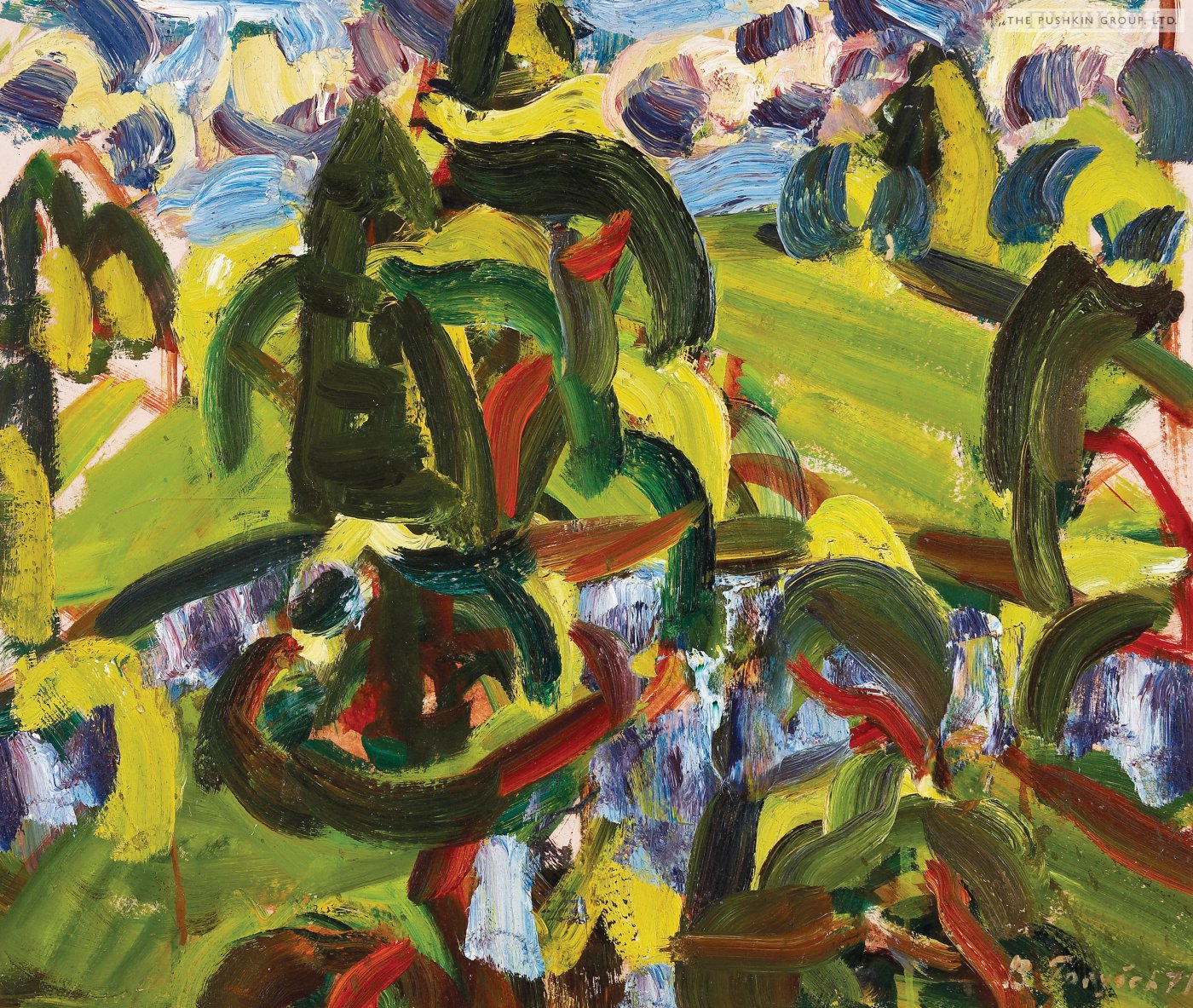
1971 / Oil on Panel / 19 x 22" (48cm x 55cm) -
Clear Winter Day
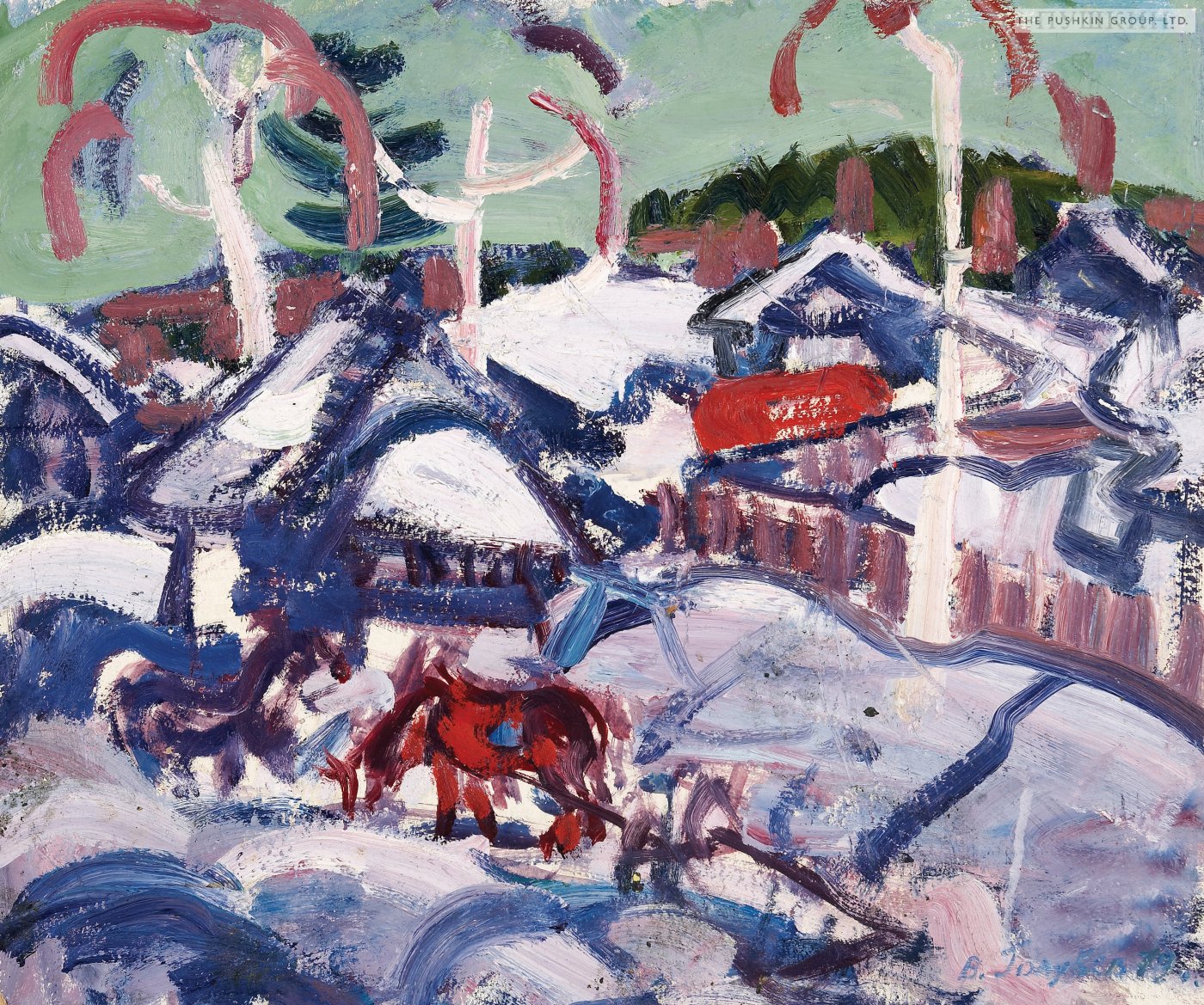
1979 / Oil on Panel / 18.00" x 22.00" (45cm x 55cm) -
Neva Embankment
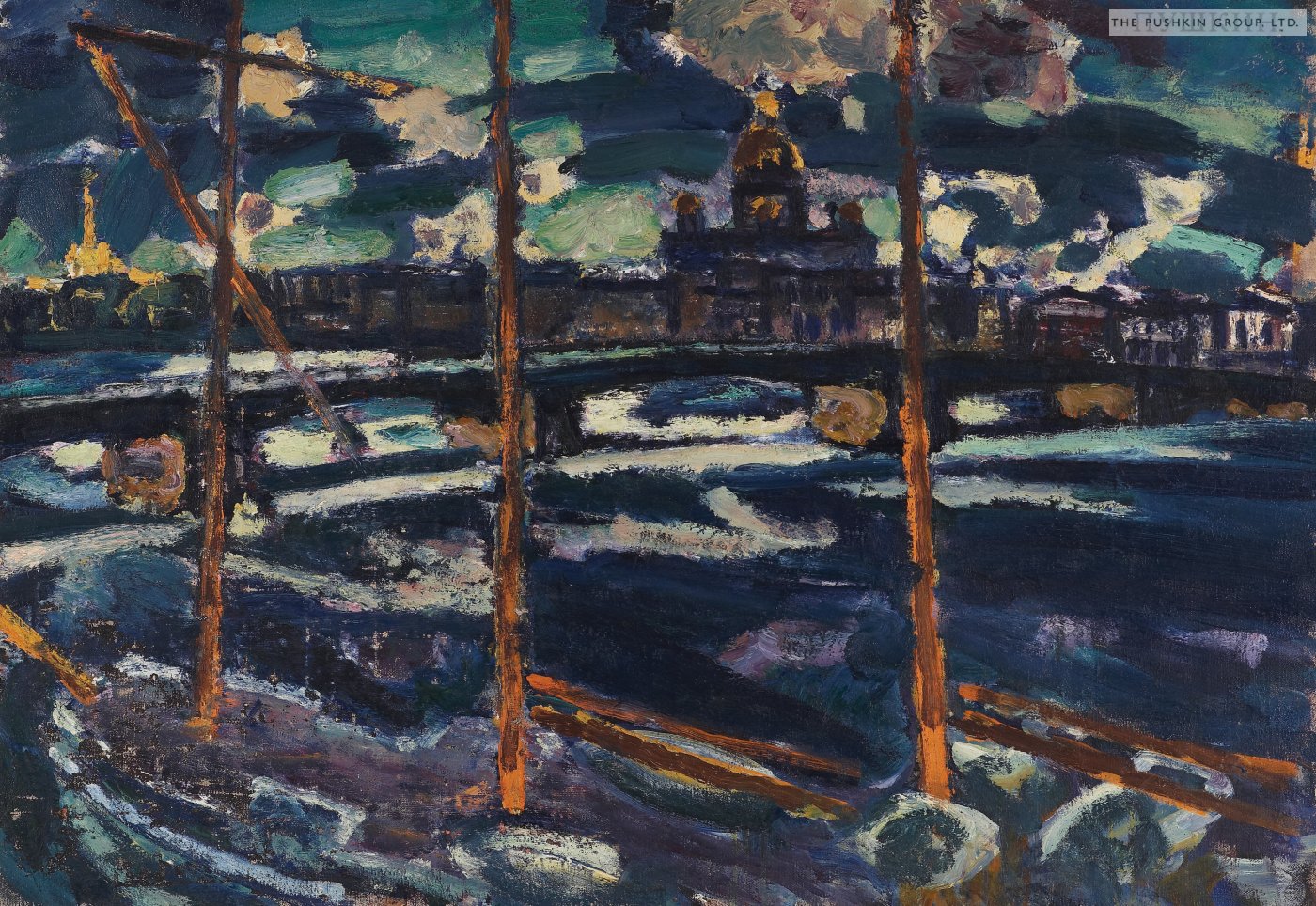
1979 / Oil on Canvas / 39.00" x 55.00" (98cm x 138cm) -
March Chores
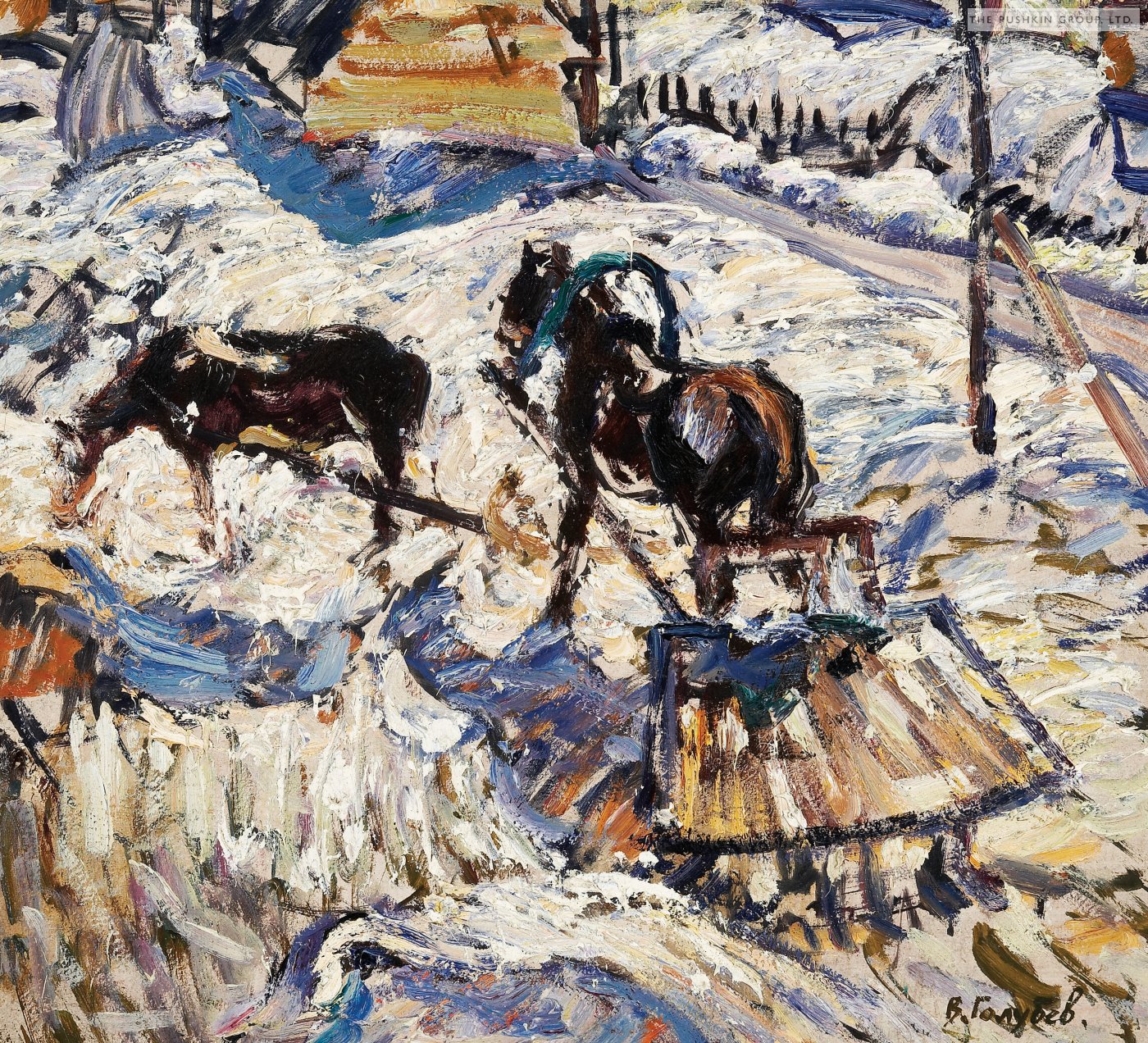
1959 / Oil on Panel / 18" x 20" (45cm x 50cm) -
Moonlit Dacha
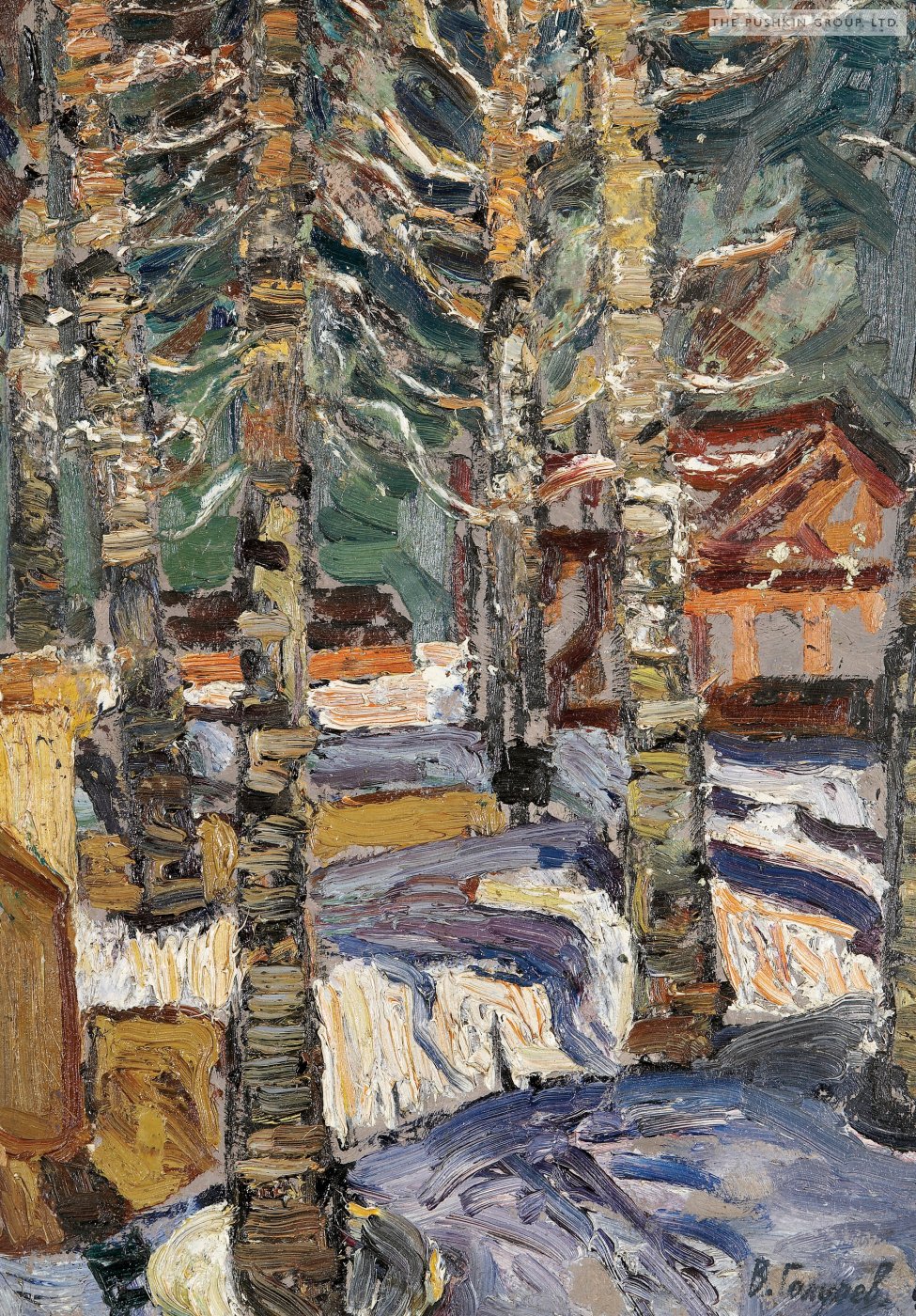
1958 / Oil on Panel / 20" x 15" (50cm x 38cm) -
Sunlight through the Trees

1957 / Oil on Panel / 13 x 18" (33cm x 45cm) -
Colors of the Forest (Triptych)
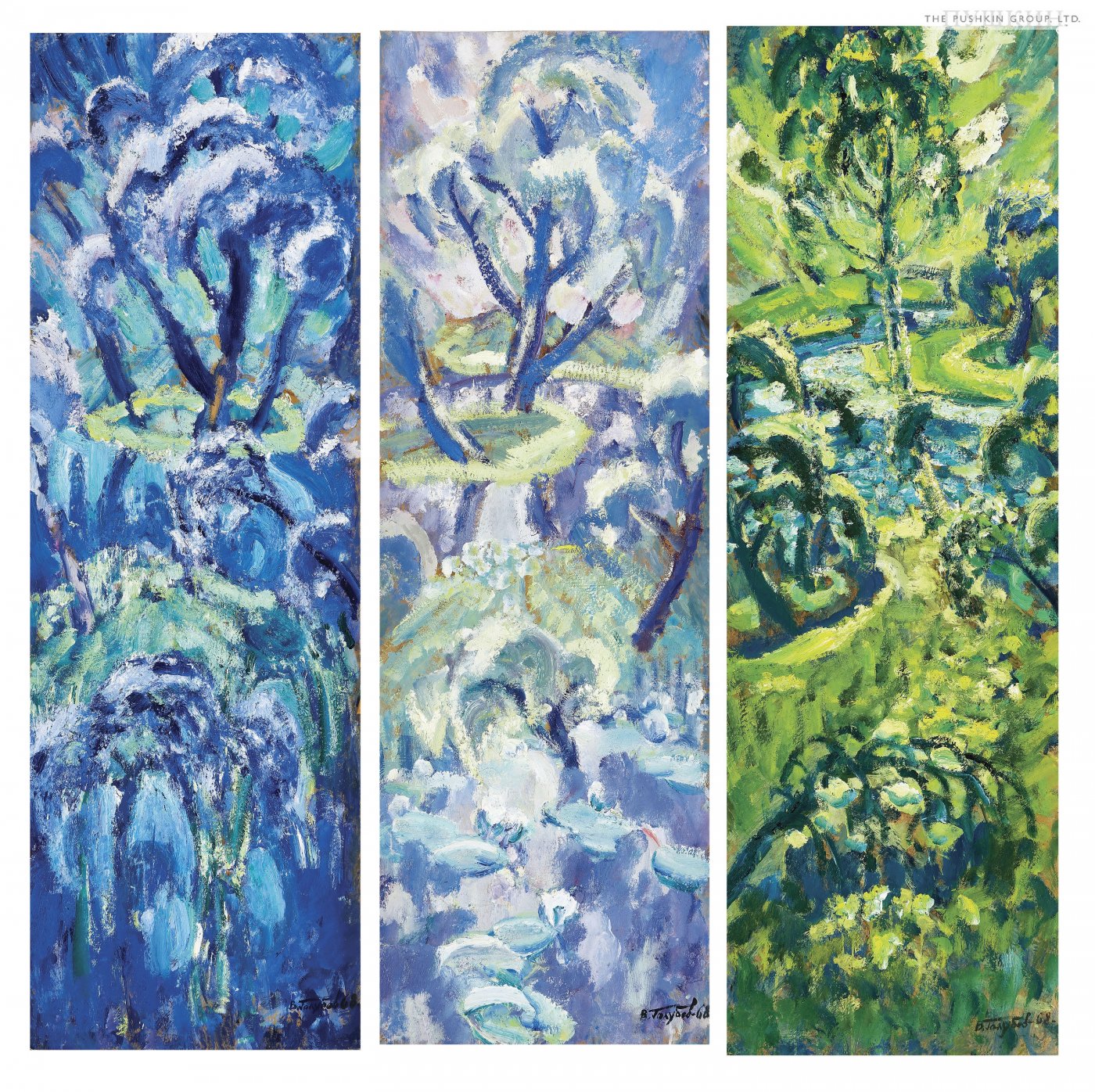
1968 / Oil on Panel / 59" x 20" (each panel)
-
Shrovetide *
![]()
1981 / Oil on Canvas / 55.00" x 70.00" (138cm x 175cm)
No. VG021 -
Summer
![]()
1982 / Oil on Panel / 41.00" x 43.00" (103cm x 108cm)
No. VG024 -
Late Summer Storm *
![]()
1978 / Oil on Panel / 22 x 22" (55cm x 55cm)
No. VG127 -
Quick River *
![]()
1970 / Oil on Panel / 23.00" x 28.00" (58cm x 70cm)
No. VG138 -
Golden Forest
![]()
1979 / Oil on Panel / 18.00" x 25.00" (45cm x 63cm)
No. VG153 -
Blue April *
![]()
1961 / Oil on Panel / 23 x 23"
No. VG164 -
Whitewater
![]()
1970 / Oil on Panel / 24.00" x 18.00" (60cm x 45cm)
No. VG184 -
Rays of Light *
![]()
1969 / Oil on Panel / 20.00" x 21.00"
No. VG191 -
Spring Breezes *
![]()
1969 / Oil on Panel / 28 x 31" (70cm x 78cm)
No. VG194 -
Tanya *
![]()
1973 / Oil on Panel / 38 x 30" (95cm x 75cm)
No. VG197 -
September *
![]()
1981 / Oil on Panel / 15 x 20" (38cm x 50cm)
No. VG210 -
Winter Cityscape *
![]()
1970 / Oil on Masonite / 27" x 36" (68cm x 90cm)
No. VG214 -
Kitchen Bench *
![]()
1961 / Oil on Panel / 26.00" x 34.00" (65cm x 85cm)
No. VG222 -
Golden Evening *
![]()
1973 / Oil on Panel / 28 x 32" (70cm x 80cm)
No. VG225 -
Into the Hills
![]()
1977 / Oil on Panel / 19 x 24" (48cm x 60cm)
No. VG233 -
Harvesting Grapes *
![]()
1972 / Oil on Masonite / 21 x 29"
No. VG248 -
Winter in the City *
![]()
1975 / Oil on Panel / 22 x 18" (55cm x 45cm)
No. VG253 -
Artists at the Dam *
![]()
1962 / Oil on Panel / 13 x 18" (33cm x 45cm)
No. VG255 -
Village Banquet *
![]()
1975 / Oil on Panel / 20 x 28" (50cm x 70cm)
No. VG257 -
Celebration in the Sky *
![]()
1973 / Oil on Panel / 23 x 29"
No. VG271 -
August Sunset *
![]()
1974 / Oil on Panel / 22.00" x 27.00" (55cm x 68cm)
No. VG287 -
The Lake Beyond *
![]()
1971 / Oil on Panel / 19 x 22" (48cm x 55cm)
No. VG303 -
Clear Winter Day
![]()
1979 / Oil on Panel / 18.00" x 22.00" (45cm x 55cm)
No. VG305 -
Neva Embankment
![]()
1979 / Oil on Canvas / 39.00" x 55.00" (98cm x 138cm)
No. VG306 -
March Chores
![]()
1959 / Oil on Panel / 18" x 20" (45cm x 50cm)
No. VG501 -
Moonlit Dacha
![]()
1958 / Oil on Panel / 20" x 15" (50cm x 38cm)
No. VG502 -
Sunlight through the Trees
![]()
1957 / Oil on Panel / 13 x 18" (33cm x 45cm)
No. VG504 -
Colors of the Forest (Triptych)
![]()
1968 / Oil on Panel / 59" x 20" (each panel)
No. VG triptych



























